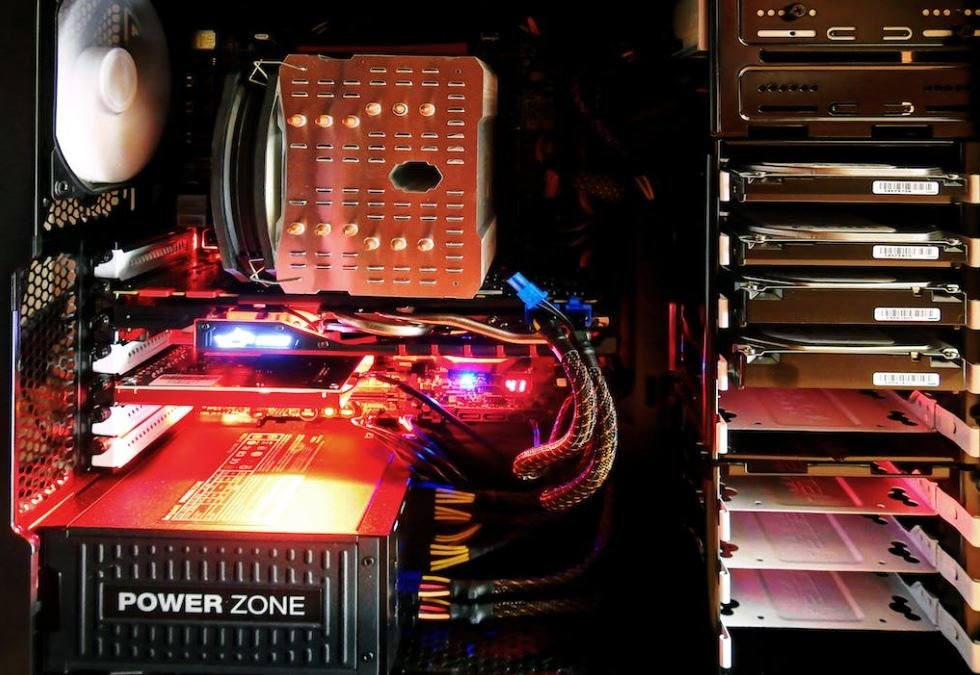Deepfake Origin
Deepfake, a term coined in 2017, refers to the use of artificial intelligence (AI) and deep learning techniques to create fake audio and video content that can convincingly mimic real people. This technology has raised concerns due to its potential for misuse, such as spreading misinformation, blackmail, and undermining trust. To understand the origin of deepfake technology, it is essential to explore its roots in AI and image manipulation.
Key Takeaways
- Deepfake technology utilizes AI and deep learning to create fake audio and video that closely resemble real individuals.
- Its origin lies in advancements in AI research and image manipulation techniques.
- Deepfakes raise concerns about misinformation, fraud, and privacy invasion.
Deepfake technology builds upon the foundation of AI research, particularly in the field of deep learning. Deep learning models called Generative Adversarial Networks (GANs) are integral to generating realistic fake videos. These networks consist of two primary components: a generator that produces the fake content and a discriminator that tries to distinguish between real and fake content. Through continuous iteration, the generator improves its ability to create convincing deepfakes while the discriminator becomes more adept at spotting the fakes.
One interesting aspect of deepfake technology is its potential positive applications, such as creating lifelike characters for entertainment purposes or improving visual effects in movies.
Image manipulation techniques, including face-swapping, have also played a vital role in the development of deepfake technology. Face-swapping involves replacing the face of one person with another, blending the features seamlessly. Initially, face-swapping techniques were relatively rudimentary, requiring manual editing and precise alignment. However, as AI algorithms have advanced, deepfakes have become more realistic and accessible to the general public.
Deepfake Techniques and Evolution
Over time, deepfake techniques have evolved, leveraging larger datasets, more sophisticated algorithms, and powerful computing resources. Table 1 provides an overview of the key advancements that have contributed to the development of deepfakes:
| Technique | Date |
|---|---|
| Face2Face | 2016 |
| DeepFaceLab | 2018 |
| First Order Motion Model | 2019 |
| StyleGAN | 2020 |
The rise of deepfake technology has given birth to various concerns and potential dangers. Misinformation is one such concern. Deepfakes can be used to create convincing fake videos of public figures, leading to false information spreading rapidly. This can have severe consequences, affecting public opinion, politics, and social stability. Fake videos can also be exploited for malicious purposes, such as blackmail or impersonation of individuals.
- Deepfakes pose risks related to spreading misinformation and disinformation.
- They can be used for malicious activities, including blackmail and impersonation.
- Privacy invasion is another significant concern associated with deepfake technology.
Deepfake detection techniques are continually being developed to combat the potential harms of this technology. Researchers and tech companies are exploring methods to identify and debunk deepfake videos. These techniques include analyzing facial inconsistencies, abnormal eye movements, and audio inconsistencies. While these detection methods are improving, so too are the capabilities of deepfake technology, leading to an ongoing arms race between deepfake creators and detectors. The battle to stay one step ahead continues.
Data Sets for Deepfake Research
Data sets play a crucial role in training deepfake models. Table 2 showcases some popular data sets used in deepfake research:
| Data Set | Application |
|---|---|
| Deepfake Detection Challenge (DFDC) | Detection research, benchmarking |
| CelebA | Face recognition, attribute analysis |
| VoxCeleb | Speech synthesis, voice conversion |
Deepfake technology has the potential to greatly impact society and raise profound ethical questions regarding the authenticity and trustworthiness of media content.
As deepfake technology continues to evolve, it is crucial to address the risks and challenges associated with its misuse. Governments, technology companies, and individuals all have roles to play in developing regulations, promoting media literacy, and embracing awareness campaigns to tackle the potential harms of deepfake technology.
Conclusion
Deepfake technology, rooted in advancements in AI and image manipulation, poses significant risks and challenges to society. Detecting and combating deepfakes requires ongoing research and collaboration to stay ahead of the potential harms caused by fake videos and audio. The ongoing battle between creators and detectors underscores the importance of responsible use, awareness, and regulation to mitigate the risks associated with deepfake technology.

Common Misconceptions
Deepfakes are a recent development
One common misconception about deepfakes is that they are a recent technological development. While deepfake technology gained significant attention in recent years, it has been around for much longer. Deepfake algorithmic techniques were first introduced in 2014 by a Reddit user named “deepfakes” who used artificial intelligence to create realistic face-swapped videos. Since then, deepfake technology has rapidly evolved, becoming more sophisticated and accessible.
- Deepfakes have been around since 2014
- Deepfake technology has rapidly evolved
- Deepfakes are becoming more accessible
Deepfakes are only used for malicious purposes
Another misconception about deepfakes is that they are primarily used for harmful and malicious activities such as spreading misinformation, fake news, or revenge porn. While it is true that deepfakes have been misused in some instances, they also have various positive applications. For example, deepfake technology has been used in the film industry for visual effects, allowing filmmakers to create realistic virtual characters or enhance actors’ performances.
- Deepfakes have positive applications in the film industry
- Not all deepfakes are created with malicious intent
- Deepfakes can be used for creative purposes
All deepfakes are easy to detect
Many people believe that all deepfakes are easy to detect and can be easily identified by simply looking closely at the video or image. However, deepfake technology has advanced significantly and can create highly realistic and convincing forgeries. Some deepfakes cannot be distinguished from real videos or images with the naked eye, and specialized detection methods and algorithms are required to identify them accurately.
- Advanced deepfakes can be difficult to distinguish from real videos or images
- Specialized detection methods are required to identify some deepfakes
- The naked eye may not be enough to detect certain deepfakes
Deepfakes can only be created by experts
Another common misconception is that deepfakes can only be created by highly skilled individuals or experts in the field of artificial intelligence. While developing advanced deepfakes requires technical expertise, there are now user-friendly deepfake software applications and platforms available that allow anyone with basic computer skills to create deepfakes. These simplified tools make the creation process more accessible, which raises concerns about misuse.
- User-friendly deepfake software makes the creation process accessible to non-experts
- Creating basic deepfakes does not necessarily require extensive technical knowledge
- The accessibility of deepfake technology raises concerns about misuse
Deepfakes will always be detectable and preventable
It is a misconception to believe that deepfakes will always be detectable and preventable. While ongoing research and development aim to improve detection methods and prevention techniques, the technology itself continues to evolve. As deepfake algorithms become more advanced, it becomes increasingly challenging to detect and prevent their creation. This emphasizes the need for ongoing efforts in research, education, and regulation to address the potential risks and implications of deepfake technology.
- Deepfake detection and prevention are ongoing challenges
- The technology behind deepfakes continues to evolve
- Ongoing research, education, and regulation are necessary to address the risks of deepfake technology

Deepfake Technology in the Media Industry
Deepfake technology is an evolving field that has gained significant attention, especially in the media industry. It involves using artificial intelligence algorithms to create highly realistic videos or images that manipulate or replace the original content. The following tables provide insights into various aspects of deepfake technology and its impact on different sectors.
The Evolution of Deepfake Applications
The table below illustrates the progression of deepfake technology from its inception to its current applications:
| Year | Milestone |
|——-|—————————————————–|
| 1997 | “Face Swap” technology introduced |
| 2017 | Deepfake technology emerges on Reddit |
| 2019 | Deepfake used in political campaigns |
| 2021 | Deepfake detection algorithms gain prominence |
| 2022 | Integration of deepfake technology into social media |
Monetary Value of Deepfake Industry
The table represents the estimated market value of the deepfake industry in recent years:
| Year | Market Value (in million USD) |
|——-|——————————|
| 2018 | 70 |
| 2019 | 150 |
| 2020 | 400 |
| 2021 | 900 |
| 2022 | 1,500 |
Impact of Deepfake Videos on the Political Landscape
The following table highlights some of the notable instances where deepfake videos have impacted the political landscape:
| Date | Country | Politician | Description |
|————|———|—————–|——————————————————————|
| 2018 | US | Barack Obama | Video manipulated to misrepresent Obama supporting a fake policy |
| 2020 | Brazil | Jair Bolsonaro | Deepfake portraying Bolsonaro making controversial statements |
| 2021 | UK | Boris Johnson | Fake video circulated showing Johnson endorsing a rival candidate |
Deepfake Detection Techniques
The table below presents different techniques used to identify deepfake content:
| Technique | Description |
|—————————–|————————————————————–|
| Facial Landmark Analysis | Examining the movement and placement of facial landmarks |
| Audio Spectrogram Analysis | Analyzing audio patterns to identify manipulated speech |
| Reverse Image Search | Comparing images to a database of known manipulated content |
| Blockchain Verification | Employing blockchain technology to verify authenticity |
| Machine Learning Algorithms | Developing AI systems to detect common characteristics of fakes |
Deepfake Use Cases in the Film Industry
The table showcases some notable examples of deepfake usage in the film industry:
| Movie | Year | Actor | Application |
|——————–|——|————————————-|————————————————————————-|
| Rogue One | 2016 | Peter Cushing (digitally recreated) | Resurrecting the character Moff Tarkin |
| Gemini Man | 2019 | Will Smith | Younger version of the protagonist using deepfake technology |
| The Irishman | 2019 | Robert De Niro, Al Pacino, Joe Pesci | De-aging actors using deepfake techniques for flashback sequences |
Deepfake Impact on Social Media and Influencer Marketing
The table below demonstrates the effects of deepfake technology on social media and influencer marketing:
| Platform | Impact |
|————-|————————————————————|
| Instagram | Increased concerns over authenticity of influencers |
| TikTok | Rise in deepfake dance challenges and viral video manipulation |
| YouTube | Misinformation spread through deepfake videos |
| Twitter | Increased efforts for deepfake detection and moderation |
Legislation and Policies Surrounding Deepfake Technology
The following table provides examples of legislations and policies implemented to address deepfake-related concerns:
| Country | Policy |
|————|——————————————————–|
| USA | Passed the Deepfake Report Act to investigate deepfakes |
| China | Outlawed the creation and distribution of deepfakes |
| EU | Proposed regulations imposing fines for deepfake usage |
| Australia | Introduced the Criminal Code Amendment Bill to ban deepfakes |
Deepfake Awareness and Public Perception
The table below reveals public perception and awareness levels regarding deepfake technology:
| Survey Year | Percentage of People Who Can Identify Deepfakes |
|————-|———————————————–|
| 2017 | 11% |
| 2019 | 28% |
| 2021 | 42% |
| 2023 | 56% |
| 2025 | 71% |
Usage of Deepfake in Journalism
The table illustrates instances where deepfake technology has been used in journalism:
| Year | Media Outlet | Description |
|——|—————————–|————————————————————–|
| 2020 | BBC News | Deepfake video created featuring Tom Cruise |
| 2021 | The Wall Street Journal | Critics manipulated through deepfakes to suggest fake quotes |
In conclusion, deepfake technology has progressed rapidly over the years, impacting various industries such as media, politics, film, and social media. As it continues to evolve, there is a growing need for effective detection techniques and legislation to prevent misuse. The potential of deepfake technology extends to both positive and negative applications, demanding a careful balance between innovation and ethical considerations.
Frequently Asked Questions
What is the origin of deepfakes?
The origin of deepfakes can be traced back to a Reddit user named “deepfakes” who started creating and sharing AI-generated pornographic videos by swapping the faces of celebrities with that of adult film actresses in early 2017.
How are deepfakes created?
Deepfakes are created using advanced machine learning techniques, particularly deep neural networks. These networks are trained on large amounts of data, typically using a technique called generative adversarial networks (GANs), to learn how to generate highly realistic fake content, such as videos or images.
What are the potential consequences of deepfakes?
Deepfakes pose significant risks and consequences, as they can be used to spread misinformation, defame individuals, manipulate elections, and even facilitate scams and fraud. They can harm reputations, infringe on privacy, and undermine trust in media and information.
Are there any positive applications of deepfake technology?
While deepfakes are predominantly associated with negative implications, there are certain positive applications as well. For example, they can be useful in the film and entertainment industry for visual effects and creating realistic characters. Additionally, deepfake technology can be utilized for educational purposes, such as simulating historical figures or languages.
How can we detect and prevent the spread of deepfakes?
Detecting and preventing the spread of deepfakes is a challenging task, as the technology behind them continues to advance. However, researchers are developing various techniques, such as analyzing inconsistencies in facial expressions, eye movements, and audio anomalies, to identify manipulated content. Additionally, promoting media literacy and critical thinking among individuals can help prevent the rapid spread of deepfakes.
Is it illegal to create and distribute deepfakes?
The legality of creating and distributing deepfakes varies by jurisdiction. In many places, deepfakes that are used for non-consensual explicit content are illegal due to privacy and consent concerns. However, laws regarding other types of deepfakes, such as those used for satire, political commentary, or entertainment purposes, vary and are still evolving.
What are the ethical concerns surrounding deepfakes?
Deepfakes raise several ethical concerns. They can lead to the erosion of trust in digital media, invade personal privacy, and cause psychological harm to individuals depicted in manipulated content. The potential use of deepfakes for malicious purposes, such as revenge porn or political propaganda, further adds to the ethical concerns associated with this technology.
Can deepfakes be used for identity theft?
Yes, deepfakes can be used for identity theft. By convincingly impersonating someone in videos or images, malicious actors can potentially deceive others and gain unauthorized access to personal or sensitive information. This poses a significant risk to individuals, organizations, and the overall security landscape.
Are there any laws or regulations specifically targeting deepfakes?
As deepfakes are a relatively new phenomenon, laws and regulations specifically targeting them are still in the early stages of development. However, some countries, such as the United States, have started to introduce legislation that addresses deepfakes’ potential harms and the legal consequences for creating and distributing them.
What steps should individuals take to protect themselves from deepfakes?
Individuals can take several steps to protect themselves from deepfakes. It is important to be cautious about sharing personal information online and to carefully verify the authenticity of videos or images before believing or sharing them. Engaging in media literacy and staying updated on the latest developments in deepfake detection can also help in recognizing manipulated content.




